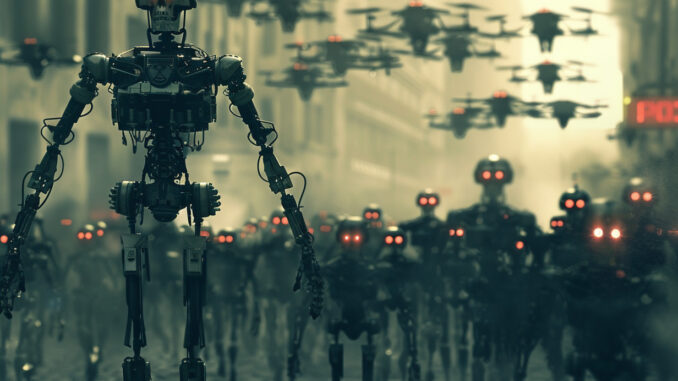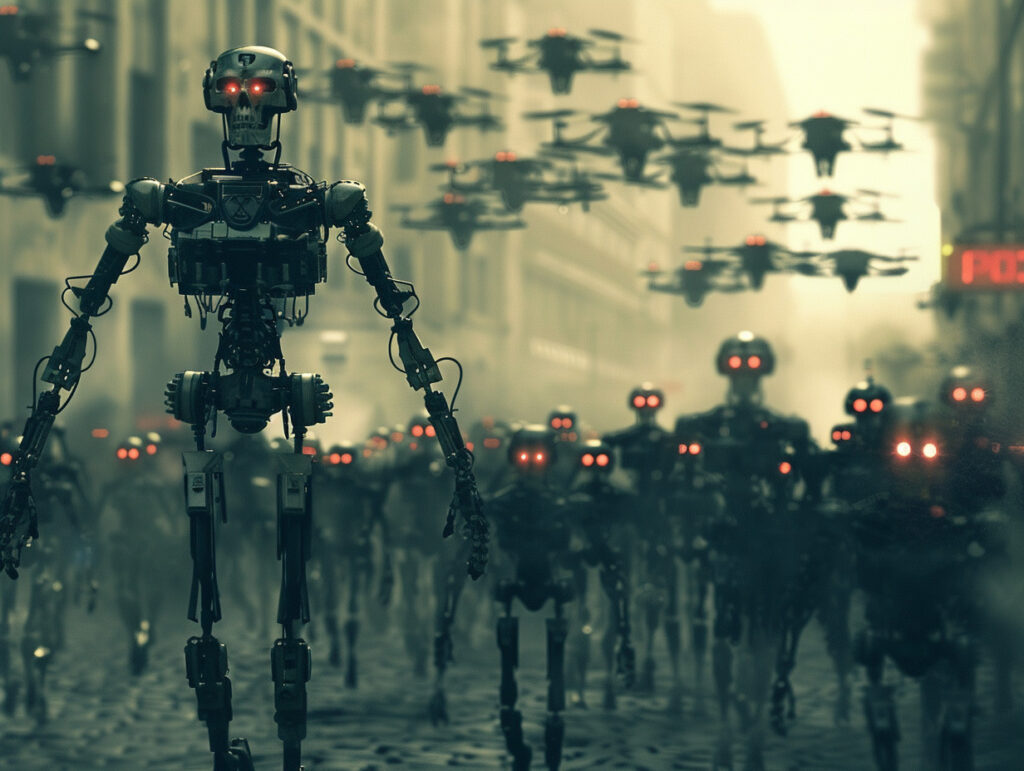
By 2039, a third of the US army could be made up of robots, thanks to advances in AI and unmanned technologies. Analysis of the implications.
By 2039, a third of the US Army could be made up of robots, according to retired General Mark Milley. Advances in artificial intelligence (AI) and unmanned technologies will enable faster and smarter military decisions. This development could mark a fundamental change in the nature of warfare. Milley stresses the importance of maintaining human supervision of military robots, especially when they are using lethal munitions, although a future in which robots make autonomous decisions cannot be ruled out.
Technological evolution and the army
Retired General Mark Milley, former Chairman of the Joint Chiefs of Staff, predicts that a third of the US military could be made up of robots by 2039. This prediction is based on rapid advances in artificial intelligence (AI) and unmanned technologies. Milley presented this vision at an Axios event, pointing out that these robots could be commanded and controlled by AI systems. This development represents a major transformation in the way armed forces operate, increasing their ability to make smarter and faster decisions on the battlefield.
Nature and character of war
Milley made a clear distinction between the nature and character of war. The nature of war remains constant, involving human activities and political acts, where each side seeks to impose its political will through the use of organised violence. On the other hand, the character of war, which encompasses tactics, technologies, weapons systems and the training of leaders, is constantly evolving. Today, with the emergence of AI and robotics, we are witnessing one of the greatest upheavals in military history. For example, the switch from musket to rifle in the American Civil War radically changed the landscape of armed conflict, just as AI and robotics could do in the near future.

Strategic advantages and military superiority
The country that integrates these new military technologies fastest will gain decisive advantages over its adversaries, according to Milley. If the US is to maintain its supremacy as the world’s most formidable military force, it must not only adapt quickly but also in a way that will bring about major changes in its operations. At present, US policy stipulates that a human must always be involved in and in charge of the use of military robots and their lethal munitions. This approach is based on the idea that humans possess an ethical framework for decision-making, an essential dimension that machines cannot replicate.
Ethical and moral implications
Milley stressed that, although technology does not possess morality, he does not rule out a future where robots, powered by AI, could make their own decisions. This prospect raises profound ethical and moral questions: is global society ready to accept autonomous machines making life-and-death decisions on the battlefield? Currently, autonomous weapons systems are programmed to follow strict instructions and require human intervention for critical decisions. However, with the advancement of AI, it is possible that these systems will acquire greater autonomy.
Consequences for military operations
The robotisation of the army will have far-reaching consequences for military operations. Robots can perform dangerous tasks without risking human lives, which could reduce the loss of life during conflicts. In addition, military robots could be deployed for reconnaissance, mine clearance, logistics and even direct combat missions. For example, drones are already widely used for precision strikes and surveillance. With enhanced capabilities and greater autonomy, these robots could transform military strategies and the dynamics of future battles.
Future prospects and challenges
The integration of robotics into the armed forces also poses significant challenges. Cyber security issues are becoming crucial, as robots and AI systems can be vulnerable to hacking and cyber attacks. Ensuring the resilience and security of these systems is essential to avoid potential hijacking that could have catastrophic consequences. In addition, there is a growing need for international regulations and legal frameworks to govern the use of autonomous weapons systems. The international community must work together to establish standards and conventions that will ensure the ethical and responsible use of these advanced technologies.
Mark Milley’s prediction of a robotic future for the US military by 2039 highlights a major technological shift in the military. Advances in AI and robotics promise to transform defence capabilities and military strategies, while raising crucial ethical and security questions. For the United States, adapting quickly to these changes is essential if it is to maintain its military superiority. However, this transition must be carefully managed to ensure the safe and ethical use of robotic technologies on the battlefield.
War Wings Daily is an independant magazine.